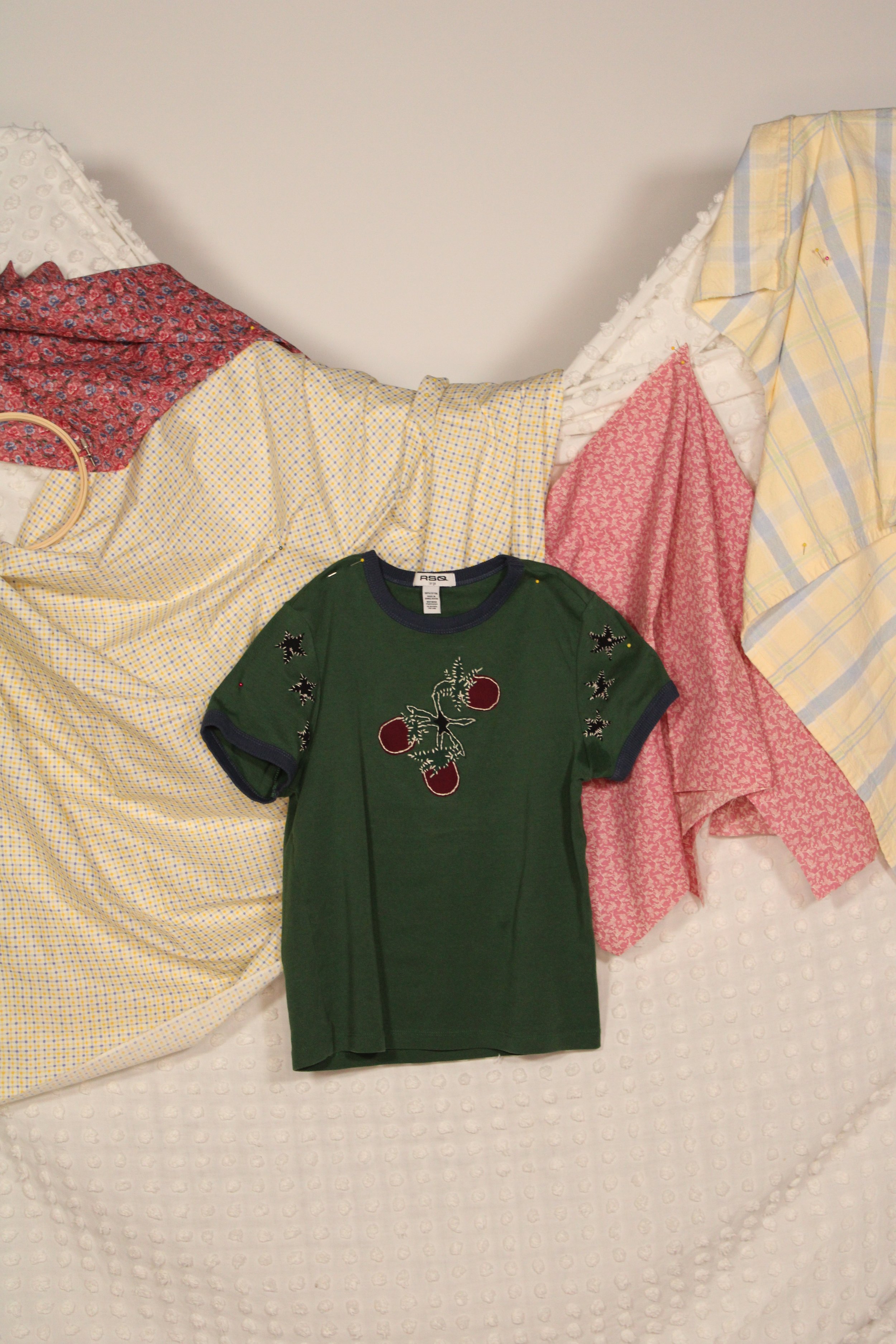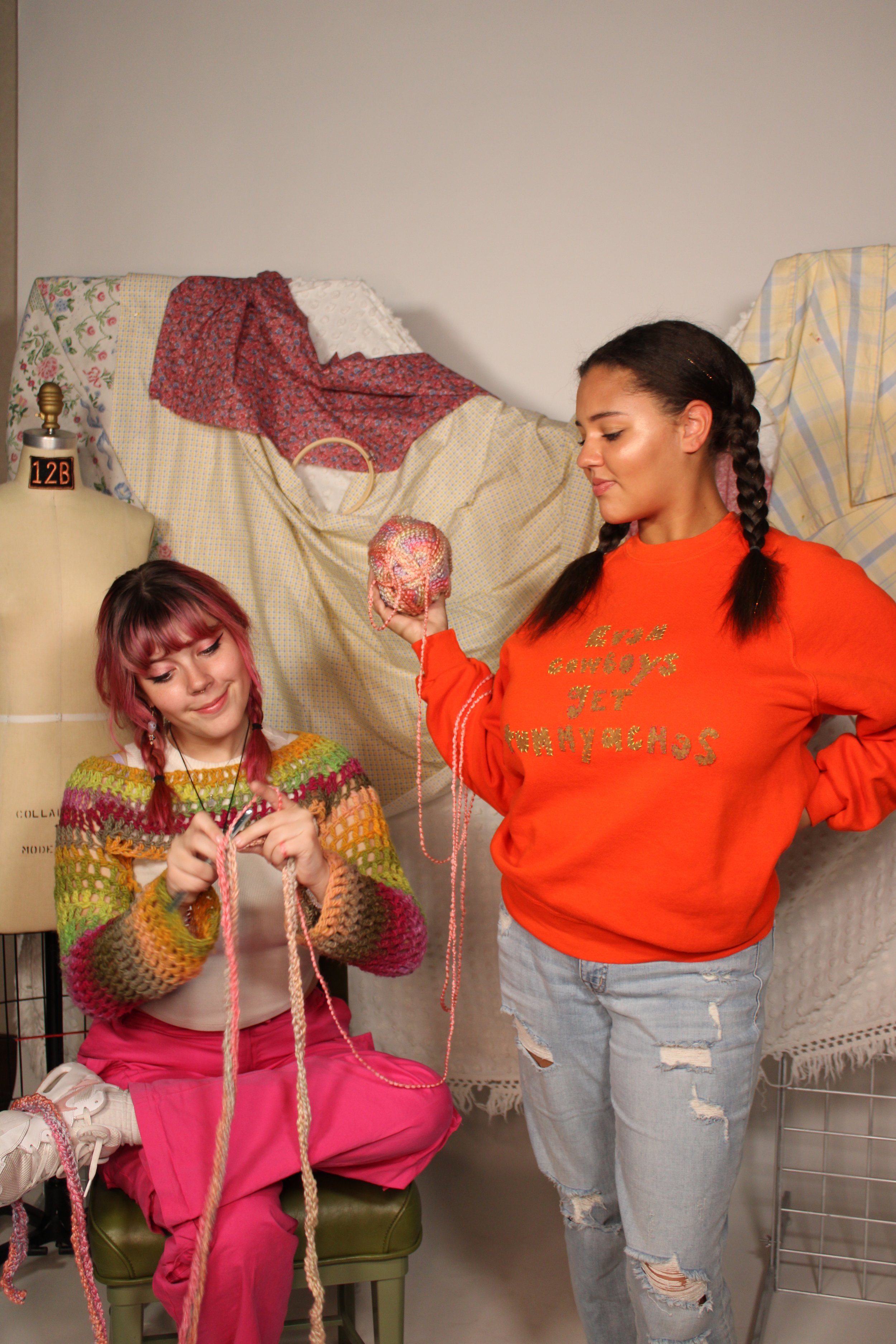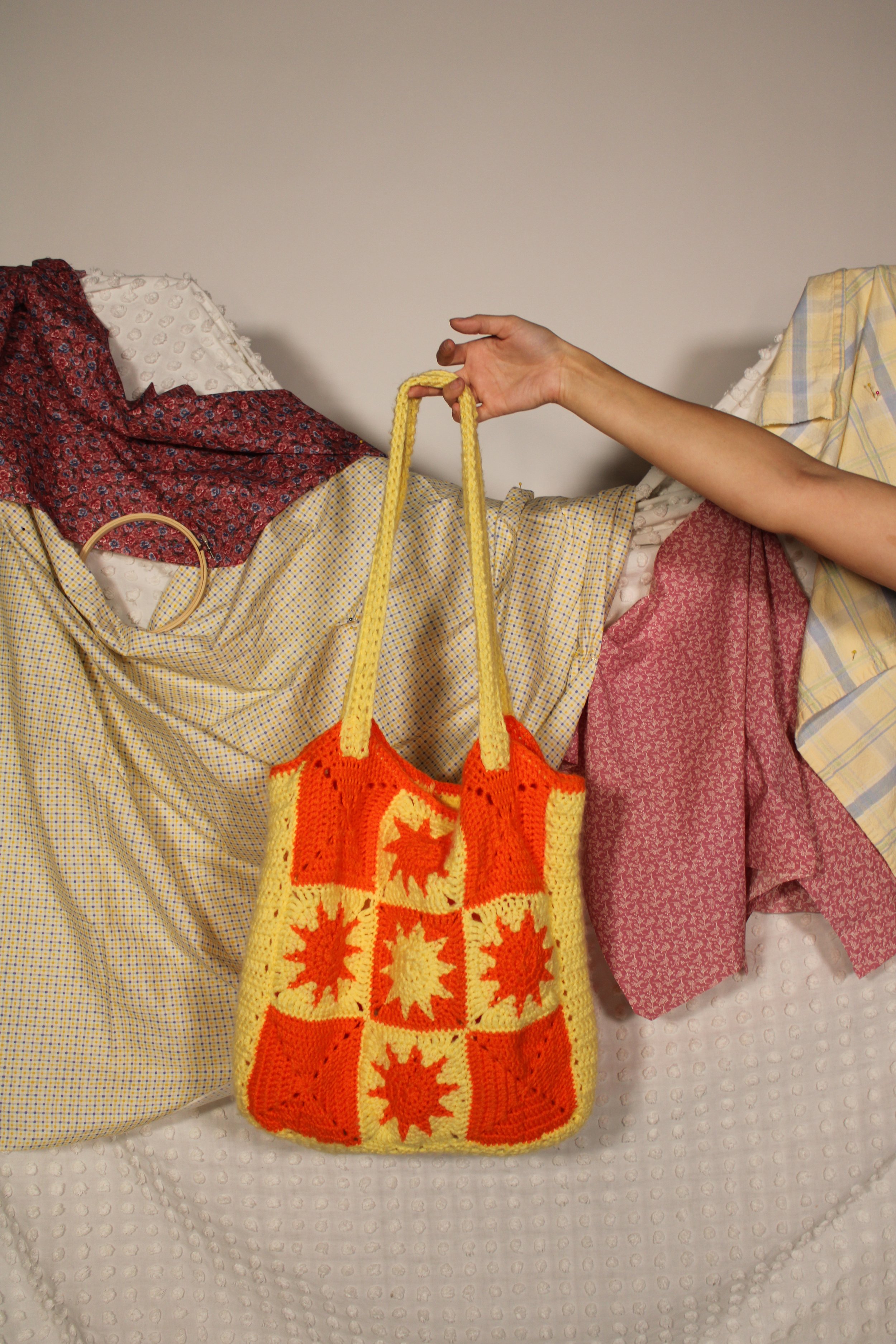Are You a Material Girl? A Brief Look Into The History of Textiles
Written and Styled By Koli Croy
Photography By Marisa Keller
Modeled By Kaitlyn Patton, Koli Croy, Jona Harders, & Alanna Hollins
From Madonna to Saucy Santana, the allure of the "material girl" spans generations. The glamor of material is hard to resist: skeins of yarn and exuberant amounts of fabric, hidden treasures stuffed in wayward corners of the Goodwill bins, begging to be given a much needed makeover, an old tapestry woven blanket just waiting to be turned in to a pair of pants is filled with reworking potential… the list goes on. Wait! Did you think I meant materials as in possessions or trinkets? Not today! Today, we are talking about “women's work,” fabric, and how the utilization of textiles for art is not a new concept.
Despite its trendiness, textile art has historical roots, and it goes back further than your grandmother teaching you how to knit in the living room, while you continuously drop stitches. Textile art can be traced all the way back to the beginning of human civilization, with anthropologists placing its inception at 100,000-500,000 years ago. Back then, pieces were mainly used for practicality, not just for creating a cute outfit. Take this line from My Modern Met, which explains how humans first started using textiles, “ Creating clothing and other textiles was laborious—everything had to be done by hand. This included gathering fibers from plants or animals and then twisting them to make them into yarn.” Crafting everything from hand took days and in the end they had little to show for it. With the boom of the Industrial Revolution, machinery helped speed up the process of textile creation. Thus, when creating a basic understanding of weaving, twisting, dying, and altering textiles, humans finally started making clothes. These garments would go on to evolve into so much more than what our neolithic ancestors were doing.
We first started making clothing for survival, warmth, and slowly it became an art form. It was something that sparked people's creativity and helped them expand on what they could design. However, in history, there's always going to be someone who questions art. Textile art was mocked by many, with some calling it “women’s work.” It can become easy to call embroidery or knitting “simple.” Anything that could be done while taking care of a child had to be repetitive and was thought to require little to no attention. I’m sure anyone who has sat and sewn for hours would likely disagree with this statement. Although this hobby became assigned to one gender, so much more came from it. Women have taken back textile art, creating meaning amongst their thread. Artists like Vanessa Barragāo and Lucy Sparrow have reclaimed the so-called “women's work” and given it their own twist. Lucy Sparrow has made entire “grocery stores” out of felt and beads. Vanessa Barragāo weaves eccentric pieces and creates coral reefs out of yarn, weaving, and hand-dying the fabrics. This craft has become more socially acceptable for men as well. Male designers such as Nick Cave and Gabriel Dawe experiment with color, thread, and the sculpting of textiles.
As textile art becomes a more serious art form, despite being around for 500,000 years, there are so many doors still waiting to be opened. Textile art has a long and winding history, much like the ball of yarn that’s most likely sitting in the corner of your room. Fabric, embroidery thread, and a needle are things anyone can have access to and, once you do, your creative abilities are endless. Having that feeling of being able to take nothing and turn it into art is what makes those pieces all worth it. I hope this encourages you to start something new–maybe even calling up your grandma again to figure out how to knit. I promise this time you won’t drop those stitches.







